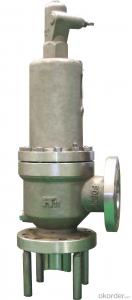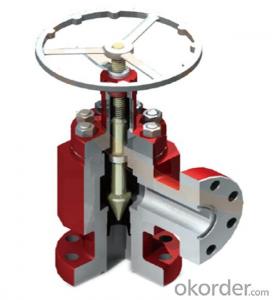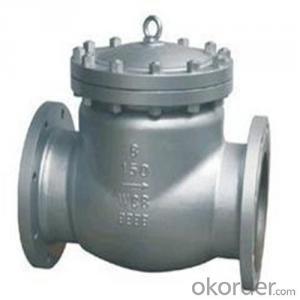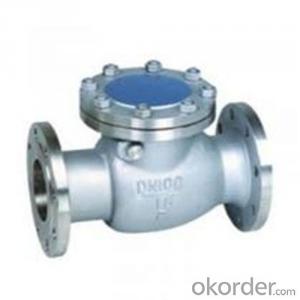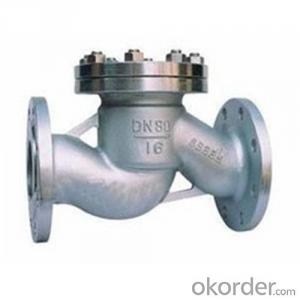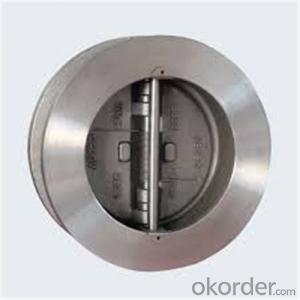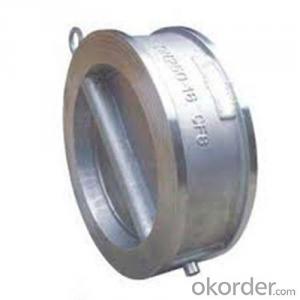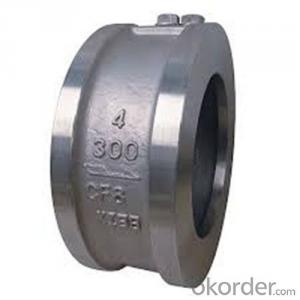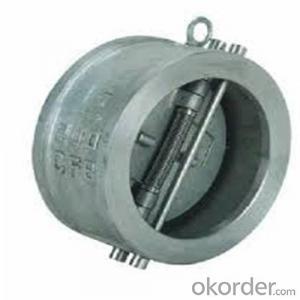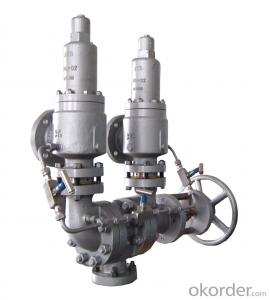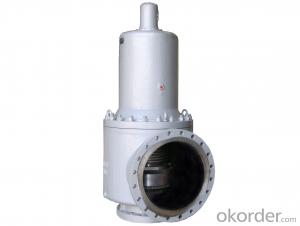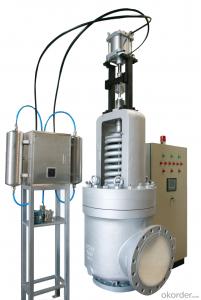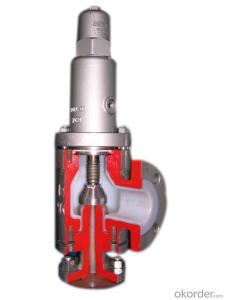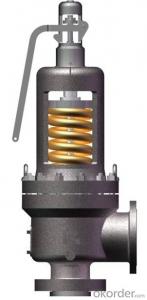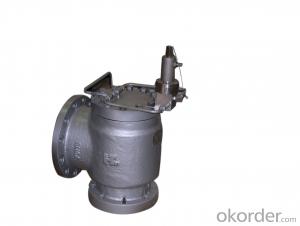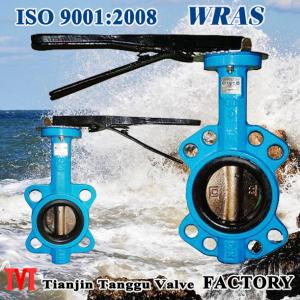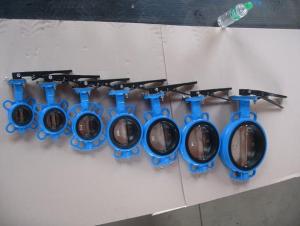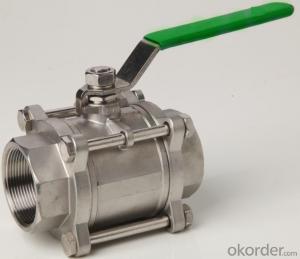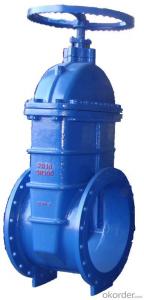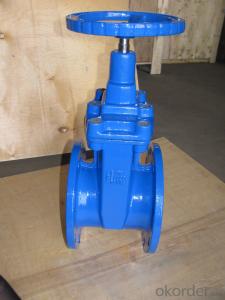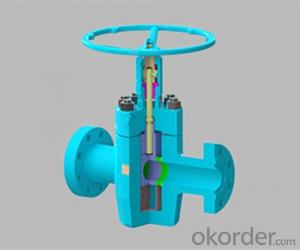High Performance WCB Pressure Relief Valve
- Loading Port:
- China Main Port
- Payment Terms:
- TT OR LC
- Min Order Qty:
- -
- Supply Capability:
- -
OKorder Service Pledge
OKorder Financial Service
You Might Also Like
Application:
A pressure relief valve (PRV) is a safety device that relieves overpressure in a vessel or system. When the pressure of vessel or system increased beyond the specified design pressure or maximum allowable working pressure, PRV will be opened automaticly to relief the overpressure for proteding the vessel or system. The PRV will be closed if the pressure reached specified design pressure so that to ensure the normal operation and protect the vessel or system.
Our Pressure Relief Valve has been designed and manuractured according to following Standard:
♦ ISO 4123-1 Safety Devices for Portection Against Excessve Pressure
♦ API STD 526 Flanged Steel Pressure Relief Valves
♦ API STD 527 Seat Tightness of Pressure Relief Valves
♦ ASME Boiler and Pressure Vessel Code Section VIII Division 1, Rules for Construction of Pressure Vessels
Peformance:
♦ Type: Conventional, Bellows
♦ Size:1" D 2"- 8" T 10"
♦ Class:150lb~2500lb
♦ Temperature:-268~+538°C
♦ Fluid: Gas, Steam, and Liquid
♦ Material: Carbon steel, Stainless steel, Alloy steel
♦ The allowable tolerance of the set pressure: ≤±3%
♦ Overpressure: ≤10%(gas)/≤20%(liquid)
♦ Blowdown: ≤10%(gas)/≤20%(liquid)
♦ Tightness: conforms to API STD 527
Features:
♦The solid nozzle is screwed into the body, which makes the maintenance easy.
♦ The shape of the disc holder has been designed to enhance the effect of the fluid thrust for an instant lift of the disc.
♦ Blowdown control is provided with adjustable nuzzle ring only.
♦ The adequate terials and clearance between disc holder and guide , spindle and adjusting screw assures disc to lift successfully.
♦ The surface of both the disc and the nozzle seat are deposited with Stellite. Excellent flatness and surface finish of the seating surfaces by precision machining and lapping assure pressure relief valve to have high degree of seat tightness and long using life.
♦ The bellows of balanced bellows pressure relief valves can not only avoid and effect of variable back pressure in the system , but also protect spring and other trim components from corrosive media.
♦ Materials are chosen carefully , and the manufacture of the spring and the bellows has strict technological process. Each of them is tested and checked strictly.
- Q: I got an engine knock and backifiring and no power not even to move the car just a few feet. I figured its the vales that are eather broken or burned out. I just started to take my top end apart to check and change borken or damaged valves so i can drive the car once again. My question is, when i take the valve cover off i can see what looks like the valves and the springs and something in the middle of the springs, now what iam i gona be looking at for a broken/damaged valve since i dont see any obvious damages but i could be wrong.
- Bad valves won't cause the problem you're describing. This is something you need to have a mechanic look at. It sounds to me like you may have an issue with a timing chain or timing belt that has jumped or it's possible that you've got a blown head gasket between a couple of cylinders. There are other possibilities too, most of them not very good. Unless you know what you're looking for, you won't be able to diagnose this yourself.
- Q: Okay, I got a 347 stroker and I noticed a spot that was leaking under one of my valve cover gaskets. So I went ahead and bought new gaskets. But before I replaced the gaskets I noticed that my valve cover bolts wasn't tight. So I basically went out for nothing and get new gaskets. Anyways since I couldnt return them, I went ahead and changed the gaskets. And I tightened all of them pretty tight. And I noticed that I still have an oil leak at the same valve cover gasket at the same place. Why is this? I also used cork gaskets, did I tighten them too hard? How hard should you torque valve cover bolts/
- You never mentiond what type of Valve Covers you Had ..Aluminum or Stamped steel.... I am supposing that you have a Chevy engine...Now the FIX......I get 10 points if I get it right,,,,, Providing you scraped and cleaned All surface area; here it is..... If it is a Stamped steel Valve cover then you have to Flatten with a Hammer the area where the bolt holes are on the Valve cover.. Now Go to an Auto Parts store or a Performance Parts warehouse and ask for an EXTRA THICK valve cover Gaskets ,Usually made by Fel-pro or Mr. Gasket...they are made out of cork or Rubber.. They even have a gasket that Sandwiches a Thin Sheet of metal between two Neoprene Gaskets ..I think it is made by The same companies...I prefer this....I use to Build Race Car Engines and operated a Auto Machine Shop... Good Luck and God Bless...
- Q: i was filling the tire on my car and the valve stem completely came out when i finished, quickly deflating the tire. i could push it back in but then the process repeated itself when i tried refilling it again. is there part of the stem i'm not seeing. the stem that i saw was long and straight and threaded. advise, thoughts? thanks.
- Are you talking about the whole valve stem? You need a new one, tire has to be dismounted to install it. Are you talking about the insides, the valve core? There is a tool to thread it in, used to be right on the valve caps that came on bicycles, is available in any auto parts store. Why that would pop out I don't know, unless somebody deliberately loosened it. Or perhaps you have ended up with some of the millions of low-quality counterfeit ones that came out of China a couple of years agol
- Q: I got a 2012 peterbilt 386 ...it just came back from the shop a few day ago to get injectors 4 and 5 looked at and repaired ....I'm getting a fault code for injector spill valve and a engine light ....I tried resetting the computer to get rid of the code but that's not it ... uld timeing of this cause the problem ...but other than that it runs like a champ so what could I do to fix this is it time cause I did probably get re timed when they repaired it
- The fault for the spill valve is not something you can correct with timing. When they repaired or replace injectors they need to be programed into the computer so they match the other injectors. The spill valve is in the injector and is there to return unneeded fuel back to tank. If this valve does not work you could be over fueling or run the risk of fuel cooking in the injector making a mess of the spray pattern. It should be telling you which injector is throwing the code and if it is one of the two that were worked on take it back.
- Q: When and why do you need to get a valve job? My car has 85k miles on it. What is the difference between a valve-job and valve-adjustment? what would the increase in power be on mine? 3800 series 2 engine, assuming it is just a little old, no major problems. 5-10hp?
- MOST modern engines have hydraulic lifters, which pretty much eliminates the need to have any periodic valve adjustments. You can take stock heads to a shop and put two grand into them and make better flow and bigger valves and more power, or actually buy a set of performance heads for less and make more power. the only time your valves would need to be set is when putting together a new engine, or taking apart the one you have and replacing say a head gasket or something. (in which case you would have a shop go through the heads and make sure they are up to factory specs. If your engine is running fine, and you have kept the oil clean and the motor in good tune, follow the recommended maintenance intervals in your owners manual. a valve adjustment is not going to give you horsepower.
- Q: Some trombones have Thayer valves? What are those for compaired to the regular standard open wraps?
- Thayer valves are the best! They make playing on the F attachment similar to playing on the open horn.
- Q: I've been working on cars since around march of 2012. I new. I have a set of 305 heads that were really dirty. It came from a 79 camaro that never had an Oil change. I took the valves out and the valves are pretty burnt. I was wondering If I cleaned them up would they still be good to use? The edges aren't rough or anything. Just let me know what is need to know please. The heads I know are still good.
- Any automotive machine shop can inspect the face and straightness if the valves to see if they can be re-ground and re-used.
- Q: where is the fuel tank selector valve located on the truck?
- There is no selector valve on 1992-95 F150's. There were or the older carbureted trucks but newer ones are all fuel injected and have in-tank fuel pumps. The switch on the dash just selects which pump you turn on. I'd say the front tank fuel pump has gone bad or possibly has a cheaper electrical problem (if you're lucky). Exact same thing happened to my 1995 F150. Replacing a pump is a pain and not cheap.
- Q: A friend of mine is having open-heart surgery next week to replace a heart valve. He needs to decide whether he wants a mechanical valve or a biological one. He is 28 years old. Which would you choose and why?
- Ask the surgeon which would be most appropriate in,If you trust your surgeon let him make the decision if you don't get a different surgeon.
- Q: Defects in which valves would produce the following?1) SEVERE DEPENDENT EDEMA?2) PAROXYSMAL NOCTURNAL DYSPEA3) CONGESTED LIVER?4) DISTENDED JUGULAR VEINS?5) PRODUCTIVE COUGH WITH FROTHY SPUTUMfor 1. i believe it's tricupsid valve, 2. mitra valve please correct me if I'm wrong. Thaanks!
- Trcusid
Send your message to us
High Performance WCB Pressure Relief Valve
- Loading Port:
- China Main Port
- Payment Terms:
- TT OR LC
- Min Order Qty:
- -
- Supply Capability:
- -
OKorder Service Pledge
OKorder Financial Service
Similar products
Hot products
Hot Searches
Related keywords
